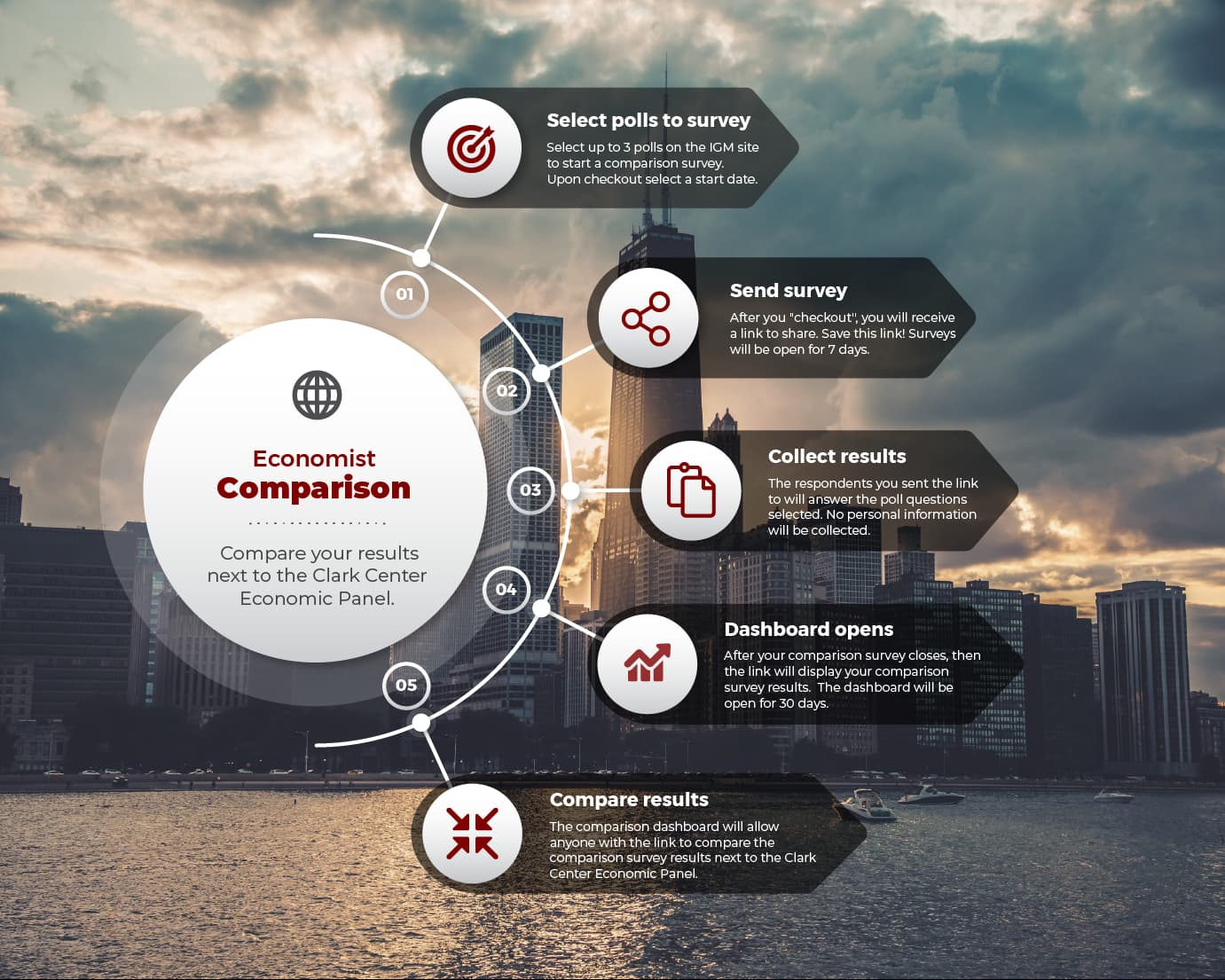The Biden Administration's recommendation to lower the real discount rate used in the cost and benefit analysis of federal regulations to 2 percent (from the current levels of 3 or 7 percent) will substantially improve regulatory analysis.
Responses
Responses weighted by each expert's confidence
| Participant | University | Vote | Confidence | Bio/Vote History |
|---|---|---|---|---|
 John Campbell |
Harvard | Bio/Vote History | ||
|
The safe discount rate should be based on inflation-indexed government bond yields and updated as these change. While rates have recently risen, it remains true that 2% is a better benchmark than 3% - and the new guidance also improves the handling of risk when that is required.
|
||||
 John Cochrane |
Hoover Institution Stanford | Bio/Vote History | ||
|
Discount rate attracts attention: promises 50 years ahead justify big costs. The calculation of benefits is worse. "Dignity" and "indigenous culture" (p. 44). Income redistribution (p. 65.) Good: p. 27 no price controls, etc. 91 pages, paperwork mountain and lawsuit bonanza.
-see background information here |
||||
 Francesca Cornelli |
Northwestern Kellogg | Did Not Answer | Bio/Vote History | |
|
|
||||
 Douglas Diamond |
Chicago Booth | Bio/Vote History | ||
|
|
||||
 Darrell Duffie |
Stanford | Bio/Vote History | ||
|
Depends on the riskiness of the future costs and benefits. A 5% discount rate could be too low or too high, depending on the regulation. One rate for everything is wrong.
|
||||
 Janice Eberly |
Northwestern Kellogg | Bio/Vote History | ||
|
A lower discount rate supports proposals with longer run benefits, but no risk adjustment lowers costs of riskier proposals. The full doc discusses many issues, eg simplicity, cash flows. Discount rate has a big impact on PV, but “Substantial” is a high bar.
-see background information here |
||||
 Eugene Fama |
Chicago Booth | Bio/Vote History | ||
|
Depends on the riskiness of the costs and benefits.
|
||||
 Xavier Gabaix |
Harvard | Did Not Answer | Bio/Vote History | |
|
|
||||
 Itay Goldstein |
UPenn Wharton | Bio/Vote History | ||
|
|
||||
 John Graham |
Duke Fuqua | Did Not Answer | Bio/Vote History | |
|
|
||||
 Campbell R. Harvey |
Duke Fuqua | Bio/Vote History | ||
|
|
||||
 David Hirshleifer |
USC | Did Not Answer | Bio/Vote History | |
|
|
||||
 Harrison Hong |
Columbia | Did Not Answer | Bio/Vote History | |
|
|
||||
 Wei Jiang |
Emory Goizueta | Bio/Vote History | ||
|
|
||||
 Steven Kaplan |
Chicago Booth | Bio/Vote History | ||
|
A 2% real rate is essentially a T-Bond rate today. That seems very low for very uncertain and risky estimates of costs and benefits.
|
||||
 Anil Kashyap |
Chicago Booth | Bio/Vote History | ||
|
|
||||
 Ralph Koijen |
Chicago Booth | Did Not Answer | Bio/Vote History | |
|
|
||||
 Camelia Kuhnen |
UNC Kenan-Flagler | Bio/Vote History | ||
|
|
||||
 Andrew Lo |
MIT Sloan | Did Not Answer | Bio/Vote History | |
|
|
||||
 Michelle Lowry |
Drexel LeBow | Bio/Vote History | ||
|
The objective is to choose a rate that reflects the real interest rate. While 3% was a realistic estimate of this rate back in 2003 (when it was set), much evidence suggests it has fallen.
|
||||
 Sydney Ludvigson |
NYU | Bio/Vote History | ||
|
|
||||
 Matteo Maggiori |
Stanford GSB | Bio/Vote History | ||
|
The previously higher rather were rather arbitrary. A lower rate might be appropriate, but what matters is the risk adjustment that depends on the risk and horizon of the project (e..g risk premia might be declining over the longer maturities)
-see background information here -see background information here |
||||
 Gregor Matvos |
Northwestern Kellogg | Bio/Vote History | ||
|
The main effect of lowering the discount rate is to promote regulations that place more weight on the younger and unborn generations and less weight on the elderly.
|
||||
 Tobias Moskowitz |
Yale School of Management | Bio/Vote History | ||
|
I don’t see how a level shift in the discount rate can improve the quality or precision of analysis.
|
||||
 Stefan Nagel |
Chicago Booth | Bio/Vote History | ||
|
2 percent is close to long-term historical average real interest rates and as such a reasonable rate for discounting certainty equivalents (which is what Circular No. A-4 suggests to do).
|
||||
 Jonathan Parker |
MIT Sloan | Bio/Vote History | ||
|
If this were to be effective, Circular A-4 would not be a confusing mess. Further, the number is backwards looking, the rate of return on Treasury debt reflects the ability of the US government to raise funds from taxpayers in bad times, and risk gets far too little attention.
-see background information here |
||||
 Christine Parlour |
Berkeley Haas | Did Not Answer | Bio/Vote History | |
|
|
||||
 Thomas Philippon |
NYU Stern | Bio/Vote History | ||
|
|
||||
 Manju Puri |
Duke Fuqua | Did Not Answer | Bio/Vote History | |
|
|
||||
 Michael R. Roberts |
UPenn Wharton | Bio/Vote History | ||
|
|
||||
 Paola Sapienza |
Northwestern Kellogg | Did Not Answer | Bio/Vote History | |
|
|
||||
 Amit Seru |
Stanford GSB | Bio/Vote History | ||
|
|
||||
 Robert Stambaugh |
UPenn Wharton | Bio/Vote History | ||
|
Hard to believe that tinkering with the discount rate is first-order compared to other dimensions of policy evaluation.
|
||||
 Laura Starks |
UT Austin McCombs | Bio/Vote History | ||
|
It will change the analysis, but will it actually substantially improve it? Not all questions can be addressed through solely a social approach or a market approach to determining the discount rate. Moreover, this presumes we should have the same discount rate for all regulation.
|
||||
 Jeremy Stein |
Harvard | Bio/Vote History | ||
|
|
||||
 Johannes Stroebel |
NYU Stern | Did Not Answer | Bio/Vote History | |
|
|
||||
 Amir Sufi |
Chicago Booth | Did Not Answer | Bio/Vote History | |
|
|
||||
 Sheridan Titman |
UT Austin McCombs | Bio/Vote History | ||
|
|
||||
 Stijn Van Nieuwerburgh |
Columbia Business School | Bio/Vote History | ||
|
A lower discount rate will focus society on longer-term costs and benefits of regulation, undoing some of the short-termism bias in private markets. One example where this has shown to matter is in climate abatement investments.
-see background information here |
||||
 Toni Whited |
UMich Ross School | Bio/Vote History | ||
|
|
||||

